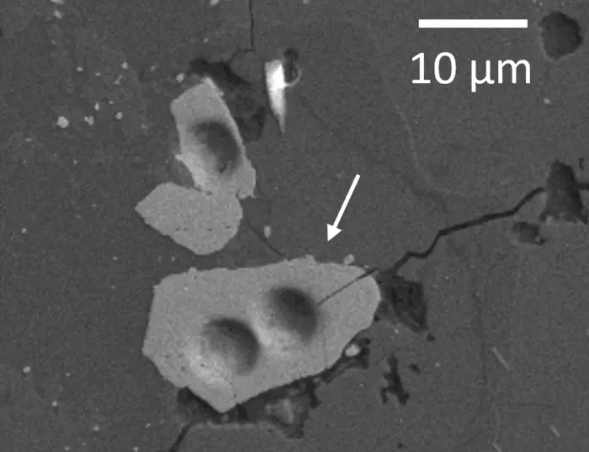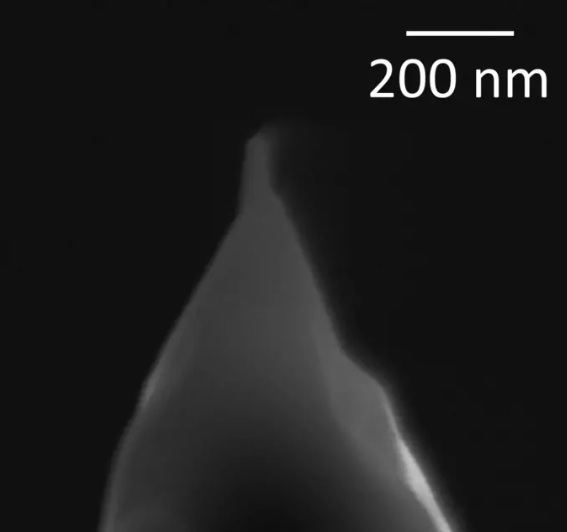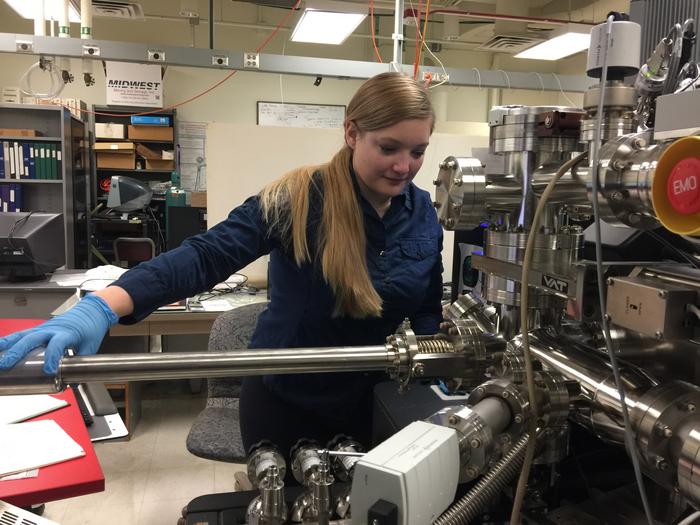An object the size of Mars crashed into the Earth over 4 billion years ago, creating a cloud of debris that formed the Moon. When the Apollo astronauts landed on the lunar surface, they found and brought back Moon rocks that helped pinpoint when this event happened. Now, a new study of crystals in the lunar samples pushed that event back even further –about 40 million years earlier than previous estimates — setting the Moon’s formation to about 4.46 billion years old – not long after the Earth formed.
Researchers at Northwestern University and the Field Museum in Chicago, along with the University of Glasgow in Scotland used an atom-probe tomography facility to study Moon rocks and dust collected during the Apollo 17 mission in 1972. This facility allowed them to perform an improved form of radiometric dating. Radiometric dating calculates an age in years for geologic materials by measuring the presence of a short-life radioactive element, such as carbon-14, or a long-life radioactive element plus its decay.

The facility, which includes a sensitive high-resolution ion microprobe, allowed the researchers to look at every atom in the zircon crystals and count how many of the atoms have undergone radioactive decay. When an atom undergoes decay, it sheds protons and neutrons to transform into different elements. Uranium, for example, decays into lead, and zircon contains the radioactive element uranium. Uranium has been called “the clock within zircon” because it converts to the element lead at a specific rate over a long span of time.
“This study is a testament to immense technological progress we have made since 1972 when the last [crewed] Moon mission returned to Earth,” said Northwestern’s Dieter Isheim, who co-authored the paper, published in the journal Geochemical Perspectives Letters. “These samples were brought to Earth half-a-century ago, but only today do we have the necessary tools to perform microanalysis at the requisite level, including atom-probe tomography.”
When the Mars-size object hit the Earth and formed the Moon, the energy of the impact melted the rock that eventually became the Moon’s surface.
“When the surface was molten like that, zircon crystals couldn’t form and survive,” explained Philipp Heck from the Field Museum, another co-author. “So, any crystals on the Moon’s surface must have formed after this lunar magma ocean cooled. Otherwise, they would have been melted and their chemical signatures would be erased.”
Apollo 17 was the sixth and final Apollo mission to land people on the Moon and was the only Apollo mission to have a trained geologist among its crew. Lunar module pilot and geologist Harrison Schmitt joined Commander Gene Cernan and Command Module Pilot Ron Evans. The astronauts landed on the southeastern rim of the Serenitatis Basin, known as Taurus-Littrow. Schmitt and Cernan collected about 243 pounds (110.4 kg) of soil and rock samples that were brought back to Earth for further study. Previous studies concluded that the samples from Apollo 17 came from the oldest known impact craters on the Moon.

For the new experiment on these samples, a small portion of the lunar sample was sharpened into a very sharp tip, using a focused ion beam microscope. Then, UV lasers evaporate atoms from the surface of that tip. The atoms travel through a mass spectrometer, and how fast they move provides evidence of how heavy they are, which in turn tells the scientists what the atoms are made of.
“These crystals are the oldest known solids that formed after the giant impact,” Heck said. “And because we know how old these crystals are, they serve as an anchor for the lunar chronology.”
Heck said that radiometric dating works somewhat like an hourglass.
“In an hourglass, sand flows from one glass bulb to another, with the passage of time indicated by the accumulation of sand in the lower bulb,” he said. “Radiometric dating works similarly by counting the number of parent atoms and the number of daughter atoms they have transformed to. The passage of time can then be calculated because the transformation rate is known.”

A previous study by co-author Bidong Zhang suggested this older age of the lunar surface. Zhang worked with lead author Jennika Greer to use the atom probe tomography facility at Northwestern to get a nanoscale look at the lunar samples, which confirmed the age of this oldest known lunar crystal
Greer was a doctoral candidate at the Field Museum and the University of Chicago and is now a research associate at the University of Glasgow.
“It’s amazing being able to have proof that the rock you’re holding is the oldest bit of the Moon we’ve found so far,” said Greer. “It’s an anchor point for so many questions about the Earth. When you know how old something is, you can better understand what has happened to it in its history.”
The researchers said it’s important to know when the Moon formed since it is such an important part of our planetary system.
“It stabilizes the Earth’s rotational axis, it’s the reason there are 24 hours in a day, it’s the reason we have tides,” said Heck. “Without the Moon, life on Earth would look different. It’s a part of our natural system that we want to better understand, and our study provides a tiny puzzle piece in that whole picture.”
Sources:
Northwestern University
Field Museum
Paper: 4.46 Ga zircons anchor chronology of lunar magma ocean
The post The Moon is 40 Million Years Older Than We Thought appeared first on Universe Today.
No comments:
Post a Comment